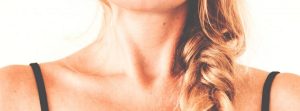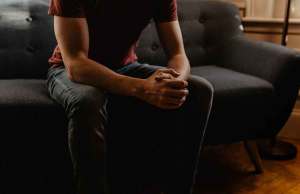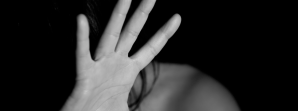The Diagnostic and Statistical Manual of Mental Disorders, Fifth Edition (DSM-5), categorizes trichotillomania as an obsessive-compulsive or related disorder. Someone who suffers with the disorder pulls out their hair on a consistent basis, whether it be hair from the scalp, eyebrows, or any other region of their body. The individual may do this in short instances throughout the day or spend longer periods, hours even, hair-pulling. It can sometimes be difficult to notice when someone has this disorder if he or she pulls hair in a widely distributed fashion or conceals their hair loss with hats or makeup, for example.
Diagnostic Criteria for Determining Trichotillomania (Hair-Pulling Disorder) DSM-5 312.39 (F63.2)
Hair-pulling may come with a wide variety of rituals involving hair. However, the following are specific criteria that must be met in order for a trichotillomania diagnosis to be made:
- The individual pulls out his or her hair regularly, which results in hair loss.
- The individual makes a consistent effort to stop hair-pulling.
- The individual’s hair-pulling causes him or her clinically significant distress or impairment in their everyday life.
- The individual’s hair loss is not due to another medical condition.
- The individual’s hair-pulling is not attributable to symptoms of another mental disorder
Supporting Features
Individuals who suffer with trichotillomania can develop habits alongside hair-pulling such as examining the hair after pulling it out, eating the hair, and playing with the hair. A wide variety of emotions also follow the acts, including feelings of gratification or relief, while some alternatively cause them, such as anxiety and boredom.
Certain individuals engage in hair-pulling without even realizing they’re doing it, while others become very focused on this task at hand. Whichever the case, hair loss is the outcome, though variable—for example, areas of hair may simply thin or completely bald. These individuals typically hide their hair-pulling habits from others as well as deny the acts when confronted.
Who Is at Risk of Developing Trichotillomania (Hair-Pulling Disorder) DSM-5 312.39 (F63.2)?
Those at a greater risk of developing trichotillomania are individuals with obsessive-compulsive disorder (OCD) and those who have close relatives who suffer from hair-pulling disorder. Otherwise, there is normal risk. In individuals that do develop trichotillomania, onset typically occurs during puberty. If they don’t get help for the disorder, it’s course will likely be chronic. Additionally, symptoms may worsen during hormonal changes in women, such as during menstruation or menopause. It is also possible for the disorder to come and go for any period of time.
Differential Diagnosis
Only careful analysis of the aforementioned criteria should result in a diagnosis of trichotillomania or hair-pulling disorder. This is due in part to the following possibly explaining the chronic hair-pulling:
- Normative hair removal. It is normal to engage in the standard cosmetic removal of hair, used to improve one’s appearance
- Other obsessive-compulsive or related disorders. For example, people with OCD may pull out hair as part of one of their rituals and those with body dysmorphic disorder may remove hair they find unappealing.
- Neurodevelopmental disorders. Hair-pulling may be the result of tics (though rarely), for example.
- Psychotic disorder. People who suffer with a psychotic disorder may pull out their hair during a hallucination or delusion.
- Another medical condition. Dermatological conditions, such as inflammation of the skin, may be to blame for the hair-pulling. And in individuals who deny hair-pulling but have a noticeable loss of hair, other causes of hair loss must be considered.
- Substance-related disorders. Though they’re unlikely to be the cause of hair-pulling, these substances may worsen it.
Is There Treatment for Trichotillomania (Hair-Pulling Disorder) DSM-5 312.39 (F63.2)?
A few different forms of therapy are available for those seeking treatment for hair-pulling:
- Cognitive Therapy: This form of therapy focuses on helping the individual identify and fix distorted beliefs related to their hair-pulling.
- Habit Reversal Training: Habit reversal training is a form of behavior therapy and is the primary treatment for hair-pulling disorder. It helps the individual recognize situations that lead to pulling his or her hair and introduces new, healthier behaviors to perform instead. For example, the therapist may suggest the individual try clenching their fists every time they have the urge to hair-pull.
- Acceptance and commitment therapy: This therapy focuses on helping the individual accept their hair-pulling tendencies and urges without actually acting on them.
Consequences of Hair-Pulling
Hair-pulling can have some irreversible as well as temporary effects on an individual, including:
- Social and occupational impairment
- Damage to hair growth and/or quality
- Abdominal pain, nausea, and vomiting in cases that involve swallowing of the hair
- Digit purpura, musculoskeletal injury, and dental damage—rare, but possible











